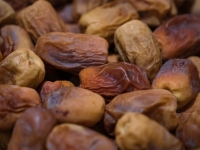
Rashodia Dates is one of the varieties of dates produced in the Kingdom of Saudi Arabia, specifically in the central region. In fact, Saudi Arabia ranked first globally in date exports in terms of value, where exports amounted to SAR1.215 in 2021, accounting for 17 percent of the world's production. The annual date production volume amounts to 1.5 million t. The Kingdom houses thirty-one million date palm trees and around 157 date factories. Nomenclature of the rashodia dates Dates in Saud...
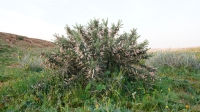
Milkvetch Plant (a l-Qattad) is a tree belonging to the Fabaceae family. It has two types: al-Qattad al-A'dham, scientifically known as Acacia hamulosa, and al-Qattad al-Asghar, scientifically known as Astragalus spinosus. This plant grows in the mountains of Harrat al-Sarat and Hejaz in the Kingdom of Saudi Arabia. Characteristics of al-Qattad al-A'dham Al-Qattad al-A'dham is spread across the mountains of Harrat al-Sarat and Hejaz, growing on the slopes and valley bottoms near ...

Al-Hassawi lime, also known as 'al-Lumi al-Hassawi,' is the second agricultural product after dates in Al-Ahsa Governorate , located in the east of the Kingdom of Saudi Arabia. The land of Al-Ahsa Oasis contains approximately one hundred thousand fruit-bearing lime trees, characterized by their fragrant aroma, dark green color, and smooth texture. Al-Hassawi lime trees spread across an area exceeding 250,000 ha. The average yield per tree during the season ranges between twenty-five a...

Yes, the Kingdom of Saudi Arabia does import falcons. In 2006, the King approved lifting the ban on the entry of hunting falcons into Saudi Arabia, allowing their importation after they undergo health inspections and verification of their regulatory documentation. The approval came after the Ministry of Environment, Water, and Agriculture at the time recommended lifting the ban, recognizing falconry as an integral part of Arab heritage practiced by many citizens of Saudi Arabia. ...
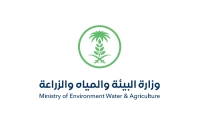
Yes, there are fishing ports in the Kingdom of Saudi Arabia, established by the Ministry of Environment, Water, and Agriculture as part of the initiative to develop fishing ports in six provinces. These include Khor Farasan Port, al-Madaya Port in Jazan Province with a capacity of 384 fishing boats, al-Qatif Port, az-Zour Port in the Eastern Province with a capacity of 556 small fishing boats and 192 large fishing boats, al-Aziziyah Port, and ar-Rayis Port in al-Madinah al-Munawwarah with a cap...

The Cultivation of Aromatic Plants in the Kingdom of Saudi Arabia refers to a type of organized cultivation widely found in several provinces and governorates of the Kingdom. These regions include Jazan Province whose farms annually produce around eight hundred t of aromatic plants. Roses and other aromatic plants are cultivated in Taif Governorate and Aseer Province for the extraction of volatile and essential oils for commercial purposes. Yarrows are among the most notable aromatic plant vari...
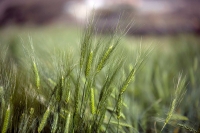
Yes, the Kingdom of Saudi Arabia produces wheat in quantities to meet part of its local demand. According to statistics from the General Food Security Authority for the 2023 local wheat procurement season, a net quantity of 1,187,658 t was supplied, representing a 121 percent increase from the previous season (2022), with a total value of SAR2 billion. Qassim Province led the Kingdom in local wheat supply with a net quantity of 309,078 t, marking a 186 percent increase from the previous season....
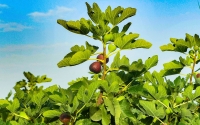
The fig production in Taif Governorate exceeds five hundred t, starting from the month of June until the end of August. The governorate is home to more than twenty thousand fig trees that supply the markets. The figs come in various sizes and are characterized by their high quality. Figs are cultivated in the Kingdom of Saudi Arabia in an area exceeding 1,395 ha, with an annual production of 26,660 t. This production achieves a self-sufficiency rate of over 107 percent. The fig tree has several...
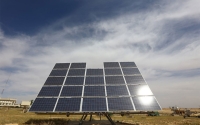
Various methods are employed in water desalination plants across the Kingdom of Saudi Arabia, all aiming to remove salts and purify water for drinking and human use or to produce distilled water. The technologies used include: Multi-Stage Flash Distillation (MSF): Many desalination plants in the Kingdom have operated using the Multi-Stage Flash Distillation technology, with capacities ranging from four thousand to thirty thousand m 3 of water. Multi-Effect Distillation (MED): The Multi-Effect D...
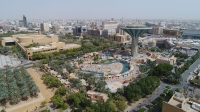
Water towers in the Kingdom of Saudi Arabia were built in earlier periods. They aimed to supply water to the provinces' population. They became heritage, cultural, and tourist landmarks, whether since their establishment or after their development. These towers comprise: Riyadh Water Tower Riyadh Water Tower, in al-Murabba Neighborhood, is one of the city's landmarks. It was built in the area of the King Abdulaziz Historical Center. It was designed by Swedish engineer Sonne Lindström...
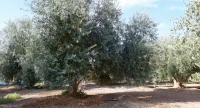
The olive tree (Olea europaea) is an evergreen tree from the Oleaceae family. It is native to the Mediterranean Basin, extending to southeastern Africa and southwestern Asia. It is also one of the three hundred plant species selected for landscaping natural sites in Riyadh , the capital of the Kingdom of Saudi Arabia. Olive Cultivation in Saudi Arabia The Olive Research Unit at the Camel and Range Research Center in al-Jawf , affiliated with the Ministry of Environment, Water, and Agriculture ,...
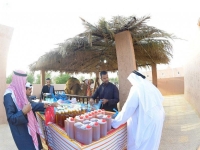
Sesame oil is extracted and produced in commercial quantities in Jazan Province . It is an ancient traditional profession in the south of the Kingdom of Saudi Arabia. Locally known as ' al-Saleet, ' it involves using traditional presses supported by camels. In Jazan, many presses continue to rely on the traditional al-Saleet extraction method. This process uses a press crafted from large, hollow, conical stems of perennial trees. Sesame seeds are placed inside the press along with a s...